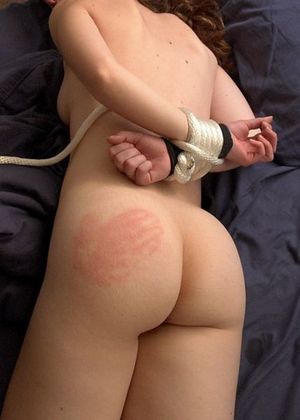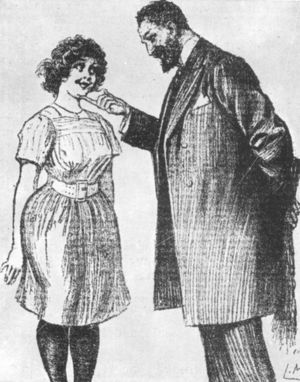Hands-behind-back position


Hands on the back, also known as hands behind the back, is a pose in which a person puts both of his or her hands on their back. The hands are usually held either at the height of the buttocks (arms fully extended) or above it at the small of the back (arms bent). Both is most comfortable when the palms are facing backward. Typically the hands are crossed at the wrists. Alternatively, the back of one hand can be held in the palm of the other, or one hand can be holding the wrist of the other.
People sometimes assume this pose when standing or walking and have nothing to do with their hands.
In low status roles
People, as individuals or groups, may also be instructed by a person in authority to put their hands on their back so they will not be tempted to do something with their hands they shouldn't, such as touch objects. As a side effect, the overall person will be easier to control this way. People who are to be punished, too, may be instructed to stand or walk with their hands on their back. If they are facing away from their disciplinarian, for example when walking before him or when standing in corner time, their hands will be put "where they are seen" this way, ensuring they can do no nonsense.
In the military, the "at ease" position involves putting the hands on the back.
It is also possible to force a non-compliant person's hands on their back and either hold them, or restrain them there, to make that person helpless while allowing sitting, standing, and walking. The hands can be tied at the wrists with rope, straps, tape, cuffs,handcuffs, or cable binders. Another means of restraint are finger stocks, which were used for this purpose to discipline children at home and school in the 18th and 19th century.
The person to be restrained can also be verbally instructed to put their hands on their back where they can be tied in a co-operative fashion without need of physical force to get their arms to this pose. Captives and prisoners are often restrained with their hands on their back.
In high status roles

The hands-on-the-back pose is also sometimes assumed by persons in authority (for example, high-rank officials inspecting a military parade, or teachers in a classroom). Here the pose is used to underline their authority, possibly suggesting something like "I'm self-controlled" or "my power comes from my person, I don't need my hands to control you". A disciplinarian may also stand like this and hide a spanking implement behind their back, to produce it at the right time.
In cases where they don't need either of their hands to keep the spankee in position, sometimes a spanker will put one hand, because it is unused, on their back while swinging the implement in their other hand.
See also
Links
- Photo of a line of little girls walking with their hands on their back
- Instructions on how to stand "at ease" and at "attention" (The Boys' Brigade Australia)
Chat rooms • What links here • Copyright info • Contact information • Category:Root